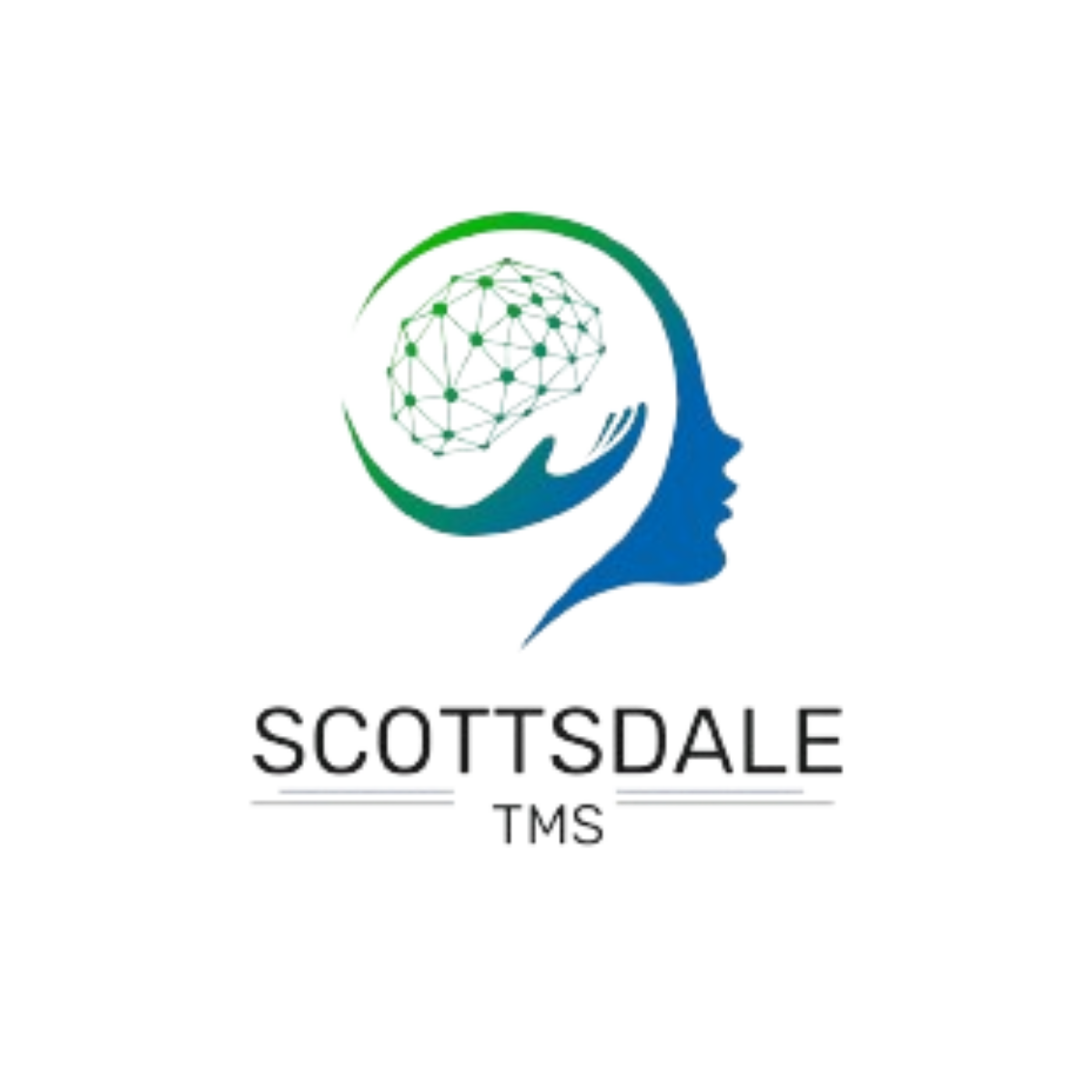Living with bipolar disorder can be overwhelming—for both the person affected and their loved ones. The extreme mood swings, ranging from depressive lows to manic highs, often require lifelong management. While medications and talk therapy work for many, some individuals continue to struggle despite treatment.
In recent years, TMS treatment for bipolar has emerged as a promising option—especially for those with treatment-resistant symptoms. In fact, an estimated 40–50% of people with bipolar disorder experience treatment-resistant depression, highlighting the need for options like TMS.
In this article, we’ll explore how transcranial magnetic stimulation (TMS) works, who it helps, and what the research says about its role in managing bipolar disorder.
Questions Answered in This Article:
Our Alcohol Addiction Treatment Programs

Scottsdale Rehab
Luxury Personalized Rehab

Hart Rehab
Holistic Luxury Personalized Rehab

Scottsdale Detox
Luxury Medical Detox
What Is TMS and How Does It Work?
Transcranial magnetic stimulation is a type of non-invasive brain stimulation that uses magnetic pulses to target specific areas of the brain involved in mood regulation. Approved by the Food and Drug Administration (FDA) for treating major depressive disorder, TMS is now being explored as a viable option for other mood disorders, including bipolar disorder.
During a treatment session, a magnetic coil is placed on the scalp. It sends short bursts of magnetic energy—similar to an MRI—into the brain. These pulses stimulate neurons and can improve communication between brain regions that may not be functioning properly in people with depression or bipolar depressive episodes.
Recognizing Symptoms of Depression in Bipolar Disorder
Understanding the symptoms of depression is crucial when exploring TMS treatment for bipolar disorder. Many individuals with bipolar experience long-lasting depressive episodes that interfere with work, relationships, and daily function. These episodes often include:
- Persistent sadness or hopelessness
- Loss of interest in hobbies or activities
- Fatigue or lack of energy
- Difficulty concentrating or making decisions
- Sleep disturbances (too much or too little)
- Changes in appetite or weight
- Thoughts of death or suicide
These symptoms of depression may look similar to major depressive disorder but can be more complex in bipolar cases. Because TMS targets specific brain areas involved in mood regulation, it may be particularly effective in managing these depressive symptoms—especially when medications fall short.
Why Consider TMS for Bipolar Disorder?
People with bipolar disorder often struggle with finding the right treatment options. While mood stabilizers, antidepressants, and antipsychotic medications help many, others experience treatment-resistant bipolar disorder—meaning their symptoms don’t improve, even after trying multiple therapies.
This is where TMS therapy for bipolar disorder comes in. Unlike medication, which affects the whole body, TMS is localized to specific parts of the brain. It’s also non-invasive, meaning no surgery, anesthesia, or recovery time is needed. For people who can’t tolerate medication side effects or who haven’t found relief through traditional approaches, TMS offers new hope.
TMS for Bipolar Depression vs. Mania
When considering TMS for bipolar disorder, it’s important to understand how it works in the different phases of the condition. Bipolar disorder involves both depressive and manic episodes, but TMS is primarily used to treat the depressive phase.
Why? Research shows that brain activity during bipolar depression closely resembles that of major depressive disorder—making TMS more effective during these periods. In contrast, applying TMS during manic episodes can sometimes worsen symptoms, so it’s generally avoided during mania.
Clinicians carefully screen patients to confirm they are experiencing depression—not mania—before starting treatment. This screening is one reason why TMS is increasingly seen as a safe and targeted option for bipolar disorder treatment.
What the Research and Clinical Trials Say
Though more research is needed, several clinical trials have examined the effects of repetitive transcranial magnetic stimulation (rTMS) in people with bipolar disorder. Results are encouraging.
One study found that rTMS significantly reduced symptoms in patients with bipolar depressive episodes, especially when combined with mood stabilizers. Another trial used intermittent theta burst stimulation—a faster form of TMS—and found improvements in both mood and cognitive symptoms without triggering mania.
These findings suggest that with the right precautions, TMS can become one of the effective treatments for bipolar depression.
What to Expect During TMS Therapy
TMS therapy typically takes place in a medical or psychiatric clinic. Here’s what a standard treatment session looks like:
- Setup: A magnetic coil is positioned against your scalp, often near the left prefrontal cortex—the area linked to mood regulation.
- Stimulation: You’ll hear clicking sounds and may feel a tapping sensation on your head. The session lasts about 20–40 minutes.
- Schedule: Most people receive treatment five days a week for four to six weeks, though schedules may vary.
You can resume normal activities right after the session. Unlike electroconvulsive therapy (ECT), TMS doesn’t cause memory loss or require sedation.
Who Is a Good Candidate for TMS?
TMS therapy for bipolar disorder may be a good option if:
- You experience treatment-resistant bipolar disorder
- Medications cause severe side effects or don’t work
- You are currently in a bipolar depressive state (not manic)
- You are seeking alternatives to invasive procedures or long-term medications
However, TMS is not recommended for people who:
- Have metal implants in or near the head (excluding dental work)
- Have active mania or psychosis
- Have a history of seizures or certain neurological disorders
As always, speak with a licensed provider to determine if TMS is right for you.
Risks and Side Effects of TMS
TMS is generally considered safe, especially compared to other bipolar disorder treatment options. Common side effects include:
- Mild scalp discomfort or headache
- Tingling or twitching of facial muscles
- Fatigue after sessions
In rare cases, TMS may cause mood shifts or trigger mania—especially if someone has not been properly screened. That’s why ongoing monitoring and working with an experienced mental health provider is essential throughout the process.
Comparing TMS to Other Bipolar Treatments
- Medications
- Invasiveness: Low
- Side Effects: Moderate to high (e.g., weight gain, fatigue, sexual side effects)
- Best For: Most bipolar patients who respond well to mood stabilizers or antipsychotics
- Psychotherapy (CBT, etc.)
- Invasiveness: None
- Side Effects: None
- Best For: Long-term support, managing stress, and monitoring mood patterns
- Electroconvulsive Therapy (ECT)
- Invasiveness: High
- Side Effects: Memory loss, confusion, and anesthesia-related effects
- Best For: Severe or life-threatening depressive or manic episodes when other treatments fail
- Transcranial Magnetic Stimulation (TMS)
- Invasiveness: None (non-invasive brain stimulation)
- Side Effects: Mild to moderate (e.g., scalp discomfort, headache)
- Best For: Treatment-resistant bipolar depression and those who can’t tolerate medication
TMS stands out for its balance between safety and effectiveness—especially for those who haven’t responded to more traditional approaches.
How TMS Targets Brain Activity
Brain imaging shows that TMS can “reset” abnormal activity in the prefrontal cortex, which plays a key role in mood regulation. These areas are often underactive during depressive episodes. By stimulating these regions, TMS can restore healthier brain function and improve emotional balance.
Newer protocols like theta burst stimulation (TBS) deliver treatment in as little as 3 minutes, potentially shortening the time commitment while maintaining effectiveness.
TMS and Long-Term Outcomes
One of the most important questions people ask is: “Will TMS work long-term?”
While results vary, many individuals report lasting improvements in mood, energy, and function after completing a full TMS cycle. Some patients may need maintenance sessions later on, but many continue to do well with just therapy and mood stabilizers.
What’s especially promising is that TMS can enhance the effects of other treatment options, such as medication and talk therapy, without adding drug interactions or severe side effects.
Exploring Your Next Step: Is TMS Therapy for Bipolar Right for You?
If you or a loved one has been struggling with bipolar depressive episodes and feel like you’ve exhausted your options, TMS treatment for bipolar may offer new hope.
This safe, non-invasive brain stimulation method continues to gain support from the psychiatric community. While it’s not a cure for bipolar disorder, it can significantly reduce symptoms for the right candidate.
At Scottsdale Rehab, we offer advanced bipolar disorder treatment tailored to each client’s needs. If you’re considering TMS therapy for bipolar disorder, our experienced staff can walk you through the process—from evaluation to care planning and beyond.

